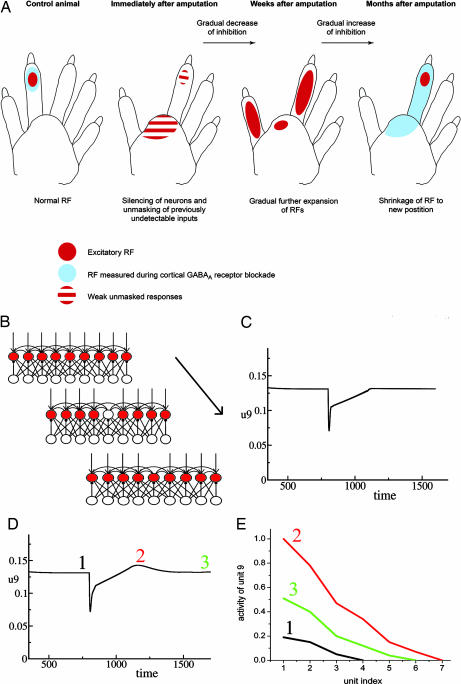Fig. 5.
Receptive field reorganization during amputation experiments. (A) Receptive field size is sensitive to the level of GABA antagonist. Remapping of receptive field (RF) location after amputation is accompanied by modulation of overall activity, which peaks part way through the recovery process. [Reproduced with permission from ref. 9 (Copyright 2004, Elsevier).] (B) Phases of the simulated amputation experiment. Baseline, external input is applied to all cortical units; amputation, input to one unit is removed, simulating amputation; recovery, the deprived unit's activation returns because of decreased inhibition and collateral excitatory inputs, which become stronger during recovery. (C) Activity of the deprived unit as a function of time during amputation experiment with the original inhibitory learning rule. (D) Activity of the deprived unit as a function of time during amputation experiment with the modified inhibitory learning rule. (E) Receptive field size of the deprived unit measured at three different times during receptive field remapping in the simulated amputation experiment (line 1, right before the amputation; line 2, during reorganization; line 3, after reorganization). Parameters are as follows: τe = 3, τi = 5, εe = 0.2, εi = 0.15, the = 0.1, thi = 0.2, Iexte = 5, toff = 800, τsyne = 120, τsyni = 30, τh = 1,000, gee = 1, gei = 2.5, gie = 2.5, wijie = 1, u0 = 0.05, p = 2.1. The Gaussian weight functions rij have SD = 3 for both excitatory-to-excitatory and excitatory-to-inhibitory connections.

